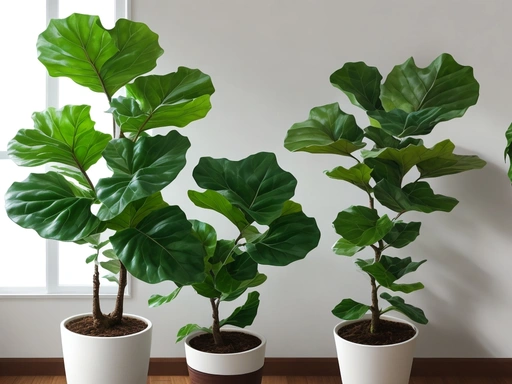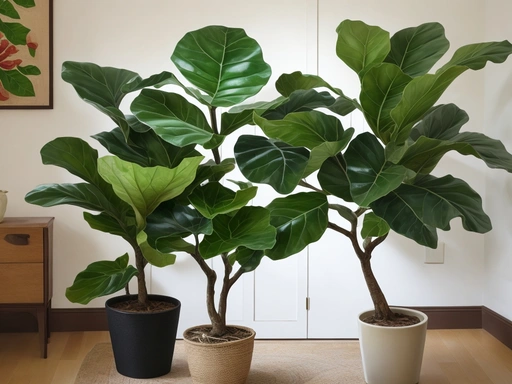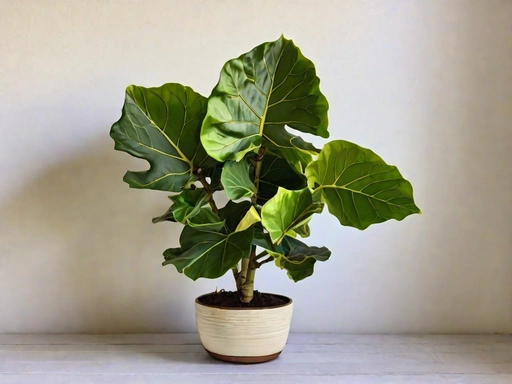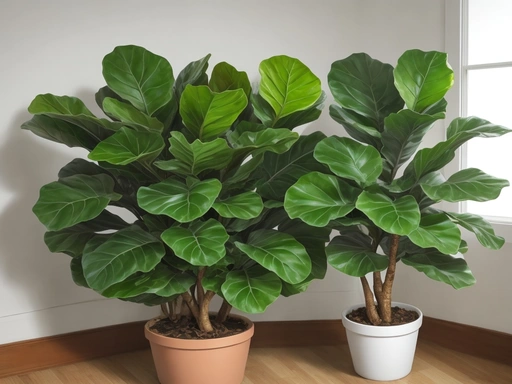Indoor Fiddle-Leaf Fig Lighting Requirements: Shedding Light on Success!
Key Takeaways:
- Fiddle-leaf figs require bright, indirect light for optimal growth.
- Direct sunlight can be too intense for indoor fiddle-leaf figs and may lead to sunburned leaves.
- Placement near a north or east-facing window can provide the ideal amount of light for fiddle-leaf figs.
- Regularly rotate your fiddle-leaf fig to ensure even light distribution and prevent leaning towards the light source.
Indoor plants can bring life and beauty to our living spaces, but ensuring they thrive requires some knowledge and care.
One popular choice for indoor plants is the fiddle-leaf fig, known for its large, vibrant green leaves.
However, giving these plants the right lighting can be a bit tricky.
In this blog post, I will guide you through the lighting requirements for indoor fiddle-leaf fig plants, explaining the importance of proper lighting and the different light needs during different stages of growth.
We will also dive into the ideal indoor lighting conditions, the role of natural light, choosing artificial lighting, common mistakes to avoid, and troubleshooting lighting issues.
So, let’s shed some light on the subject and help your fiddle-leaf fig thrive indoors!
| Lighting Level | Recommended Hours of Light |
| Low Light | 6-8 hours |
| Medium Light | 8-10 hours |
| Bright Indirect Light | 10-12 hours |
Understanding the Lighting Requirements of Indoor Fiddle-leaf Fig Plants
Understanding the lighting requirements of indoor fiddle-leaf fig plants is essential for their health and growth.
The Importance of Proper Lighting for Fiddle-leaf Fig Plants
Proper lighting is crucial for fiddle-leaf fig plants. Adequate light ensures their growth, health, and overall appearance.
Insufficient light can make the plant weak, leggy, and prone to diseases.
Too much direct sunlight can scorch the leaves, causing damage. Finding the right balance and providing the ideal lighting conditions is key to successful fiddle-leaf fig care.

Different Light Requirements for Different Growth Stages
Different growth stages of indoor fiddle-leaf fig plants have different light requirements. During the initial growth phase, they need bright, indirect light to establish strong roots and develop leaves.
Mature plants prefer bright, filtered light to promote healthy growth.
Avoid placing them in direct sunlight, as it can scorch the leaves. If you notice leggy growth, it could be a sign of insufficient light.

The Ideal Indoor Lighting Conditions for Fiddle-leaf Fig Plants
The ideal indoor lighting conditions for fiddle-leaf fig plants include bright, indirect light. Place them near an east- or west-facing window, but avoid direct sunlight.
Rotate the plant regularly for even growth.
If a window isn’t available, use artificial grow lights, keeping them on for 10-12 hours a day.
The Role of Natural Light in Indoor Fiddle-leaf Fig Care
Natural light plays a vital role in the care of indoor fiddle-leaf fig plants.
They thrive in bright, indirect sunlight, which helps them grow healthy and lush.
Place them near a window where they receive bright, filtered light.
Rotate the plant regularly for even exposure.
Lack of light can lead to leggy growth and leaves losing their vibrant green color.
So make sure your fiddle-leaf fig gets sufficient natural light for optimal growth.
Choosing Artificial Lighting for Indoor Fiddle-leaf Fig Plants
Choosing artificial lighting for indoor fiddle-leaf fig plants is important to ensure their growth and overall health. Opt for full-spectrum LED lights with a color temperature between 6500K-7000K for optimal results.
Place the lights 12-18 inches above the plant, ensuring even coverage.
Use a timer to provide 12-16 hours of light per day, replicating natural sunlight. Avoid direct exposure to hot or cold drafts, as it can harm the plant.
Regularly monitor the plant’s growth and adjust the lighting accordingly.

Common Lighting Mistakes to Avoid with Fiddle-leaf Fig Plants
One common lighting mistake to avoid with fiddle-leaf fig plants is placing them in direct sunlight.
This can cause sunburn and leaf damage.
Another mistake is not providing enough light, which can result in leggy growth and droopy leaves.
Lastly, avoid placing your fiddle-leaf fig too far away from a light source, as this can lead to weak growth and sparse foliage.
Troubleshooting Lighting Issues for Indoor Fiddle-leaf Fig Plants
If your indoor fiddle-leaf fig isn’t thriving, lighting may be the issue.
Here are some common troubleshooting tips:
- Insufficient light: If your plant’s leaves are pale or drooping, it may not be receiving enough light. Move it closer to a window or provide artificial light.
- Direct sunlight: Fiddle-leaf figs prefer bright, indirect light. If the leaves are turning yellow or developing brown spots, it may be getting too much direct sunlight.
- Inadequate artificial light: If you’re using artificial lighting, make sure it’s the right type (full-spectrum and intensity. Adjust the distance and duration to mimic natural light.
- Lack of rotation: Rotate your plant regularly to ensure all sides receive equal light. Neglecting this can lead to uneven growth and leaf drop on the shaded side.
- Light pollution: Avoid placing your plant near sources of artificial light at night. Excessive exposure to light can disrupt the plant’s natural light-dark cycle and affect its growth.
Remember, every plant is unique, so observe and adjust accordingly.
With a little troubleshooting, you can provide the optimal lighting conditions for your indoor fiddle-leaf fig plant to thrive.
Some Frequently Asked Questions about Lighting for Indoor Fiddle-leaf Fig Plants
– Is natural light sufficient for fiddle-leaf figs?
Natural light is ideal, but it may not always be enough.
Supplement with artificial light if needed.
– How much artificial light do fiddle-leaf figs need?
Provide 12-14 hours of artificial light each day for optimal growth.
Use a timer to ensure consistent lighting.
– What type of artificial light is best?
Choose a full-spectrum LED grow light.
It mimics natural sunlight and promotes healthy leaf development.
– Can I place my fiddle-leaf fig near a window?
Yes, as long as it receives bright, indirect light.
Avoid direct sunlight that can scorch the leaves.
– How close should the light be to the plant?
Keep the light 12-18 inches away from the plant.
Adjust the height if you notice stretching or burning of leaves.
– What if my fiddle-leaf fig isn’t getting enough light?
Move it to a brighter spot or add supplemental artificial light.
Watch for signs of pale leaves or slowed growth.
– Can I use regular household bulbs for lighting?
Regular bulbs aren’t recommended.
They emit insufficient light and can damage the plant.
– Should I rotate my fiddle-leaf fig for even lighting?
Yes, rotate it every 2-3 months to promote even growth.
This helps prevent one-sided leaning or uneven leaf development.
– Can I leave the grow light on all night?
Fiddle-leaf figs need a period of darkness for rest.
Use a timer to provide a consistent light schedule and allow for periods of darkness.
Final Verdict
Understanding the lighting requirements of indoor fiddle-leaf fig plants is crucial for their health and growth. Different growth stages require different levels of light, and providing the ideal conditions will ensure a thriving plant.
Natural light plays a vital role, but when it’s insufficient, artificial lighting can be used as a supplement.
To avoid common mistakes, such as overexposure or inadequate lighting, it’s important to monitor and adjust as needed. By troubleshooting any lighting issues and providing the right conditions, your indoor fiddle-leaf fig plant will flourish and bring beauty to your space.







